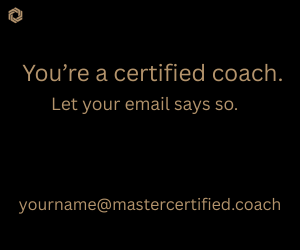The brain is acutely and instinctively resistant to change, which is interpreted as a threat because it is different from what the brain was expecting. It sends an error-detection signal to the amygdala, the emotional register and fear circuitry. This triggers the fight-or-flight response: Large amounts of energy are redirected from the prefrontal cortex, the center of higher-order thinking, to body functions that support fight or flight. This leaves little attention or energy for creative problem-solving and reasoning, both of which are essential for learning.
According to Amy Brann, a coach is an expert in facilitating neuroplasticity. Long-lasting change occurs when the brain unravels old neural connections and creates new ones (neuroplasticity). Coaches can call upon neuroscience to help clients change through the use of brain functioning.
Automated responses, or habits, are constructed deep in the brain. They are formed through recurring actions that lead to a reward and, physiologically, they form because signals travel down the same neural pathways repeatedly.
The brain tires easily, so it favors repetition and energy conservation. Unfortunately, once automated behaviors are anchored, they do not command the brain’s attention. Unproductive, and even harmful, habits become ingrained.
Several brain regions—such as the action and reward centers, the error-detection system, short- and long-term memory, the prefrontal cortex and the emotional register—must work together for sustainable change to be achieved. Coordination among these areas can be enhanced by optimizing certain neurobiological processes at specific points in the change process, reducing resistance and facilitating progress.
The Transtheoretical Model for behavior change describes five stages of change that are especially useful as a means of guiding clients through change.
Precontemplation
Initially, the client may be unaware, reluctant, discouraged or feel that the cost of change outweighs its benefits. The client can be moved toward the desired change by reducing the threat response and creating awareness of the need for change.
Coaches should tap into:
- The prefrontal cortex and short-term memory by discussing facts and encouraging reflection on current habits.
- Long-term memory by probing what worked and didn’t work in the past to produce a desired change.
- The error-detection system by identifying conflicting priorities.
- The emotional register by affect labeling, the process of verbalizing how the client feels about the change and its benefits. This connects the reasoning function (prefrontal cortex) to the emotional center (amygdala).
Contemplation
The client recognizes the need for change but may feel ambivalent. The coach’s role is to foster critical thinking and consciousness:
- Activate the reasoning centers by asking questions that focus on successful changes that the client has made recently. Systematically counter each of the cons by stating how important the pros are relative to them.
- Identify the triggers of the unwanted behavior, paying attention to associated feelings. Label and reappraise the emotion and then distance from it.
- Stimulate the action center by having the client envision success and describe that experience in both the first and third persons. Taking both perspectives helps the brain integrate the proposed change.
Preparation
With the client now ready to act, the coach:
- Helps establish “well-formed” goals through questions such as,
- How does the goal fit within your life?
- What will you be doing when you achieve your goal?
- What will you hear at this time, and what will you feel?
These questions create a sensory experience that “tricks” the brain into storing the imagined experience in memory and let the subconscious take action.
- Keeps clients grounded in the near term. Coaches can ask,
- What is the time frame in which you must act?
- What can you accomplish in the next month?
Action
The client is modifying behavior, but this requires the brain to expend considerable energy. The error-detection system is likely activated, signaling a threat response. The coach can assist the client with problem-solving and objectivity:
- The prefrontal cortex can be engaged by reframing negative thoughts. Role-playing helps consolidate the new behavior and its corresponding emotions.
- The reward centers can be activated by identifying actions that will move the brain toward the rewards of increased status, certainty, autonomy, relatedness or fairness.
Maintenance
The coach can help the client create a plan against lapses and a way to consolidate gains and increase self-efficacy:
- Access short-term memory by reviewing success.
- Use the emotional center to identify the positive emotions felt during the process. Affect labeling is helpful.
Understanding the brain’s physiology gives coaches and clients an additional lens to view change and reduce resistance to it. The use of just a few neuroscience principles at each stage allows coaches to help clients call upon their own brains’ potential and resourcefulness. The impact of coaching is increased, and clients are better supported to make deep and transformational change.
© 2020 Vanita Bellen All Rights Reserved
Disclaimer
The views and opinions expressed in guest posts featured on this blog are those of the author and do not necessarily reflect the opinions and views of the International Coach Federation (ICF). The publication of a guest post on the ICF Blog does not equate to an ICF endorsement or guarantee of the products or services provided by the author.
Additionally, for the purpose of full disclosure and as a disclaimer of liability, this content was possibly generated using the assistance of an AI program. Its contents, either in whole or in part, have been reviewed and revised by a human. Nevertheless, the reader/user is responsible for verifying the information presented and should not rely upon this article or post as providing any specific professional advice or counsel. Its contents are provided “as is,” and ICF makes no representations or warranties as to its accuracy or completeness and to the fullest extent permitted by applicable law specifically disclaims any and all liability for any damages or injuries resulting from use of or reliance thereupon.
Authors
Post Type
Blog
Audience Type
Coach Educators, Experienced Coaches, External Coaches, HR & Organizational Leaders, ICF Assessors, ICF Chapter Leaders, Individuals Interested in Experiencing Coaching, Internal Coaches, Managers/Leaders Using Coaching Skills, Mentor Coaches, New Coaches, Professional Coaches, Team and Group Coaches
Topic
Future of Coaching, Research
Related Posts
Walking the Talk: Reflective Practice for Coaches
Embodying presence and self-care through ICF Competency 2. This article explores how…
Why Transformational Coaching Will Always Be Human
As artificial intelligence (AI) gains power and popularity, many coaches are asking,…
Coaching for Growth at Alberta’s Municipal Climate Change Action Centre
It started with two colleagues sharing a passion for sustainability. Professional coach…








